Ranthambore National Park Travel Guide With Safari Tips
Ranthambore National Park in Rajasthan’s Sawai Madhopur district is recognized as one of India’s most important wildlife reserves, mainly for its Royal Bengal Tigers. Ranthambore National Park, with its size of 1334 sq km, includes forests, lakes and ancient structures, especially the impressive Ranthambore Fort. Once belonging to Indian royalty for hunting, hunting ground brings adventure, many species to view and the best chance to spot a tiger.
Table of Contents
ToggleFlora and Fauna of Ranthambore National Park
Ranthambore National Park of Sawai Madhopur is a blend of various Wildlife animals and Plant species. Even if many people come to see the Bengal Tigers, they can also see other animals like leopards, sloth bears, hyenas, jackals, wild boars and types of deer called sambar and chital. The marsh crocodiles of Bhitarkanika are commonly found in lakes, and the park is the home of more than 300 bird species such as peacocks, owls, and eagles.
There are mostly dry deciduous trees in the forest and the Dhok tree is found most often. Some other trees found here are banyan, pipal, neem, ber and the flame of the forest. The presence of open grasslands, bushes, rivers and lakes allows many animals and birds to live and breed.
Take the full tour: Top Destinations to Visit in Sawai Madhopur in 2025
Top attractions in and around the park
Ranthambore National Park itself consists of attractive sites and as well as around it:
1. Ranthambore Fort

The 10th-century fort of Ranthambore is the main attraction for tourists, due to its breathtaking views, Trinetra Ganesh Temple, and historical significance. The fort has a unique architecture of walls, Spacious gates, and Stone walls.
2. Padam Talao
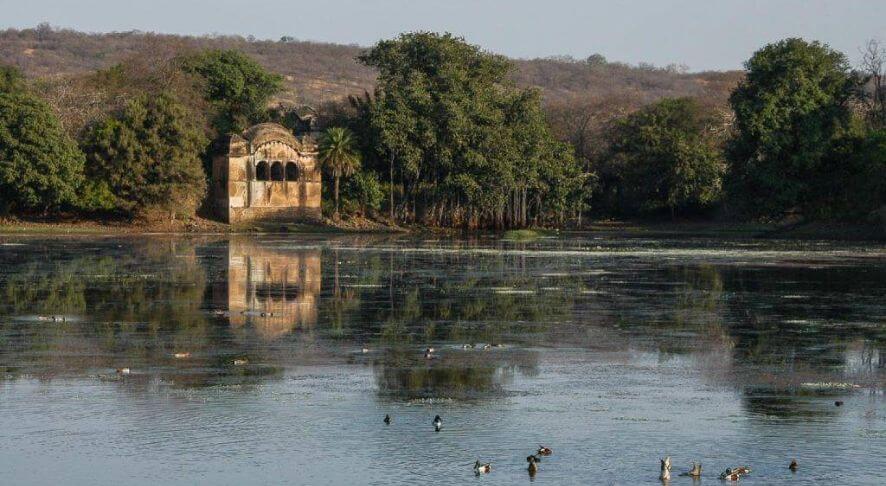
It is the largest lake of Ranthambore National Park, where tigers can be frequently seen. Birds, deer, sloth bears, and tigers often visit the river banks, and these can be admired during the Tiger Safari.
Discover the Golden City’s charm: Top Places to Visit in Jaisalmer in 2025
3. Raj Bagh Ruins
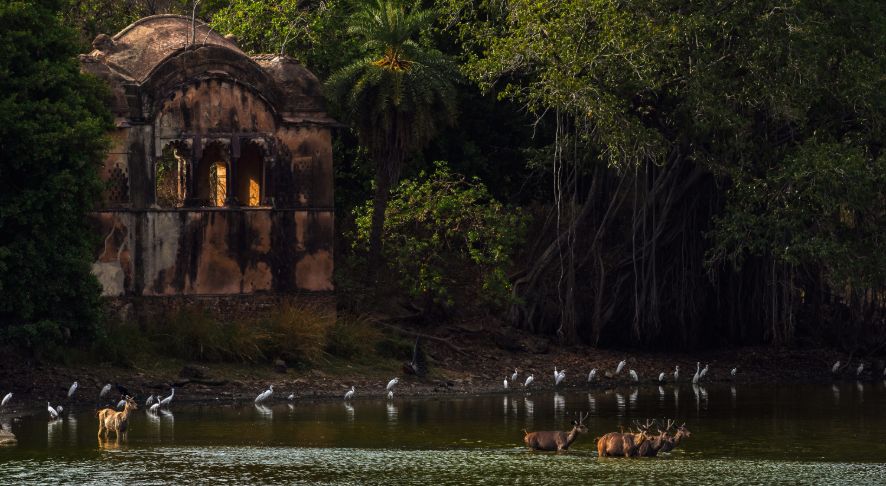
These are the mansions that were used for hunting in the park, but have now become ruined. These ruins add a royal and mysterious touch to the Park.
4. Malik Talao
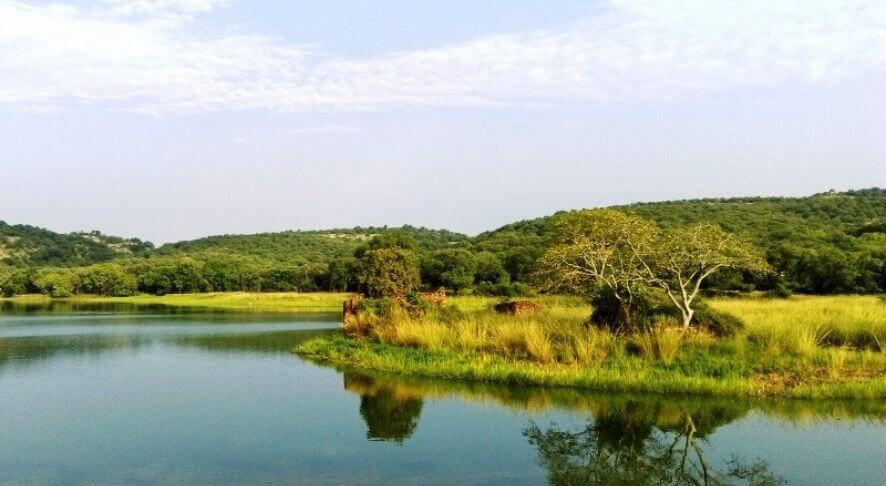
Malik Talao is a little-known, isolated lake tucked within the park. A lot of tourists come to see crocodiles relaxing and birds watching near the water. Because there are no noisy tourists or vehicles, you can observe animals in a peaceful way.
Discover hidden gems: Top Places to Visit in Kishangarh in 2025
Things to do inside the National Park
Taking in all the best of Ranthambore National Park by tourists is difficult; here are some things to help you do so:
1. Wildlife Safari

Witness a lovely Jeep Safari through the dense forest of Ranthambore while admiring rich biodiversity, historical ruins, and serene lakes.
2. Bird Watching

The park is home to over 300+ bird species, which include rare and common species. Admiring these species from the lakes and the fort will feel much more peaceful.
3. Photography
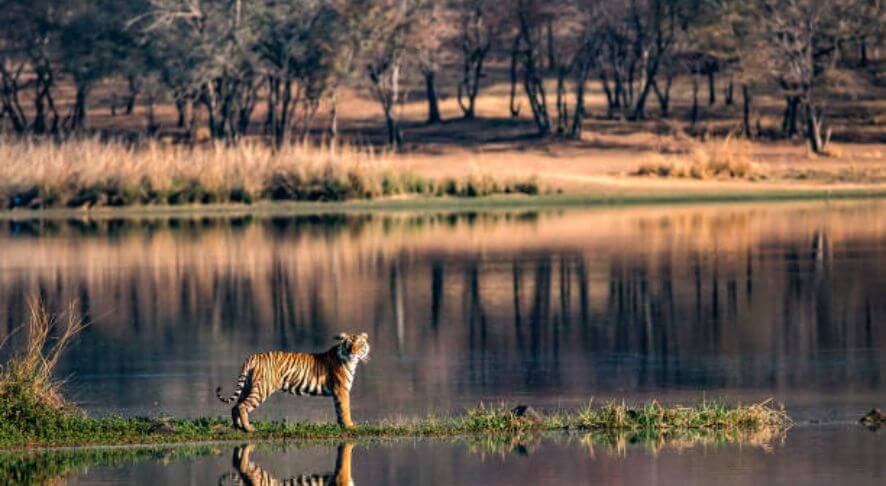
Ranthambore offers some of the finest places in India for wildlife photographers. Shoot beautiful pictures of tigers, the surroundings, birds, and old ruins in their natural setting.
4. Visit Jogi Mahal
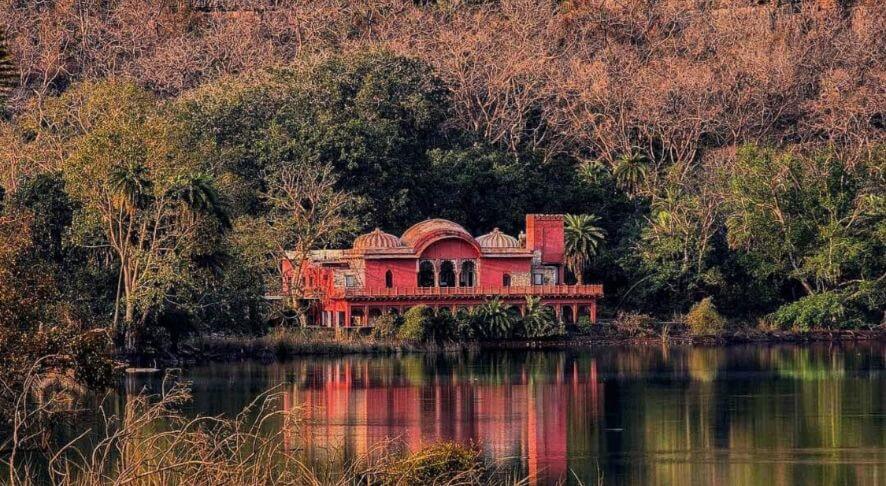
Not far from Padam Talao is Jogi Mahal, a lovely mansion with a huge banyan tree nearby. You cannot go in, but you can still view the temple and the lake from the perimeter.
See the Pink City at its best: Top Places to Visit in Jaipur in 2025
Tips for a visit to Ranthambore National Park
It is the wildlife sanctuary, which can be dangerous for you if you don’t follow these tips:
- Don’t try to get off from Jeep during the wildlife safari.
- Capture photos only from a distance.
- Use binoculars for long sights.
- Wear lightweight clothes like trousers and a T-shirt.
- Book wildlife safaris in advance.
- Carry essentials like a water bottle, sunglasses, a hat, and a power bank.
- Maintain cleanliness within the park and don’t feed animals.
- It is illegal to disrupt the natural habitat of animals and plants.
- Carry ID proof with you.
- Have the patience to watch an animal.
Best Time to Visit
Ranthambore National Park can be visited with vibrant and cold weather between October to June. March through June offers the greatest chances to see tigers, since these animals tend to locate close to water. Pleasant weather and birdwatching can be best enjoyed in winter.
From Dargahs to lakes—Top Places to Visit in Ajmer in 2025
Timings of Visiting
Ranthambore National Park remains closed during the monsoon season and is open during Winters and summers when animals can be seen. Its safari timing will continue to change based on seasons:
Summer Season (April-June):
- Morning Safari – 6:00 AM to 9:30 AM.
- Evening Safari – 3:30 PM to 7:00 PM.
Winter Season (October to March):
- Morning Safari: 7:00 AM to 10:30 AM.
- Evening Safari: 2:00 PM to 5:30 PM.
Don’t miss this: Top Offbeat Places to Visit in Udaipur in 2025
How to Reach
It was the world-famed location of Rajasthan, which can be accessed from several ways of transport like Flight, Train and Bus:
By Flight: Ranthambore is about 160 km from Jaipur International Airport, which is the closest airport. At the airport, you can arrange a taxi or a private cab to go to Sawai Madhopur, which will take 3 to 4 hours.
By Train: Sawai Madhopur Junction is the closest railway station to the Park at just 10 km. Sawai Madhopur Railway Station is well-linked with big cities like Delhi, Jaipur, Mumbai, and Agra. Getting a taxi or an auto-rickshaw from the station is very convenient.
By Bus: Bus services between Sawai Madhopur and Jaipur, Delhi, Kota and Ajmer are available both from the government and private authorities. If you get to the bus stand, taxis or autos are available to get you to your hotel or the entrance of the National Park.
Frequently Asked Questions
1. Why is Ranthambore so famous?
Ans: Ranthambore is famous for its Royal Bengal Tigers, rich wildlife, and the 10th-century Ranthambore Fort nestled within the national park.
2. Which month is best for Ranthambore?
Ans: March to June is best for tiger sightings; October to February offers pleasant weather.
3. What is the cost of a Ranthambore safari?
Ans: Safari costs range from ₹1,500 to ₹4,000 per person, based on vehicle and zone.
4. What is the distance from Jaipur to Ranthambore?
Ans: Ranthambore is about 160 km from Jaipur, around 3.5 to 4 hours by road.
5. Which is the best safari zone in Ranthambore?
Ans: Zones 3 and 4 are popular for frequent tiger sightings.
6. Is 1 day enough for Ranthambore National Park?
Ans: One day with two safaris (morning and evening) is enough for a good experience, though a 2-day visit increases your chances of sightings.
7. How do I book a safari for Ranthambore?
Ans: Book online via the Rajasthan Forest Department site or through tour operators.
8. What should I wear on the Ranthambore safari?
Ans: Wear neutral-colored, lightweight clothes, a hat, and sunglasses.
9. Ranthambore National Park is famous for which animal?
Ans: It is famous for the Royal Bengal Tiger.
10. Which safari is better, morning or evening in Ranthambore?
Ans: Morning safaris are cooler and better for spotting active wildlife.
11. Which is better, Ranthambore or Jim Corbett?
Ans: Ranthambore is better for tiger sightings; Jim Corbett offers denser forests and more birdlife. Choice depends on your wildlife interest.
